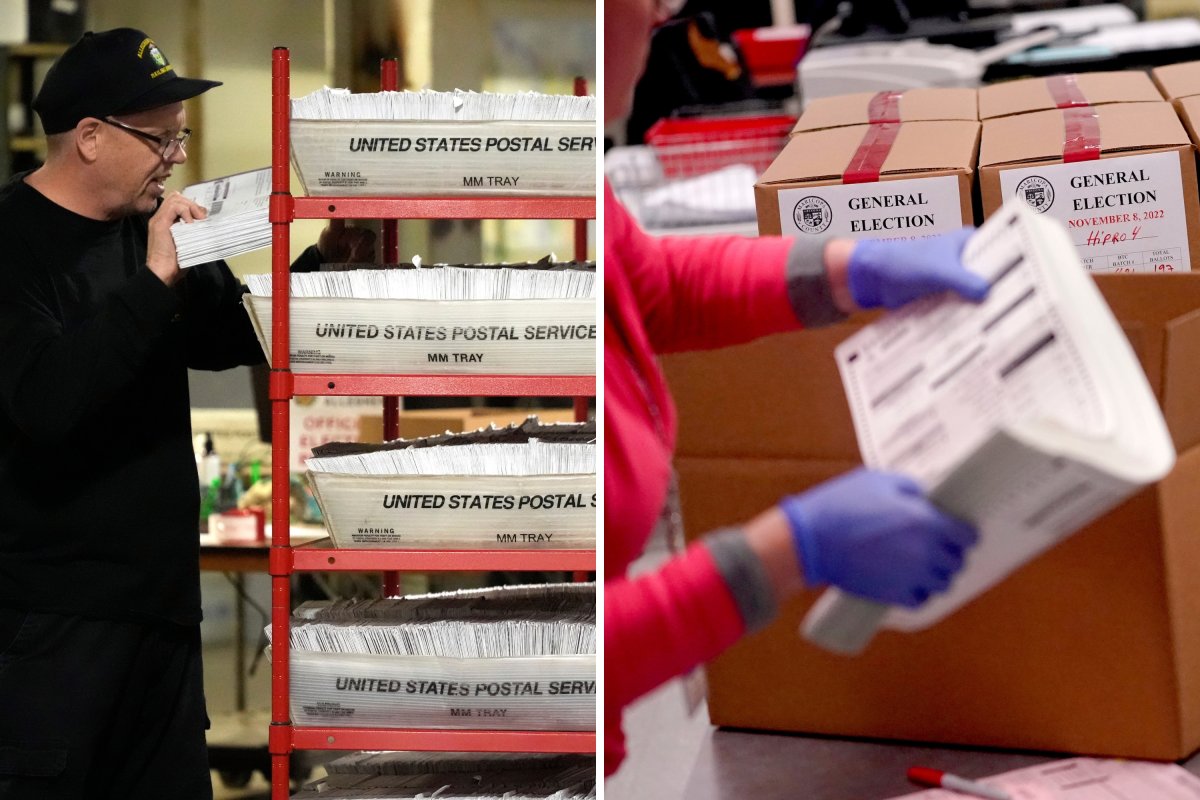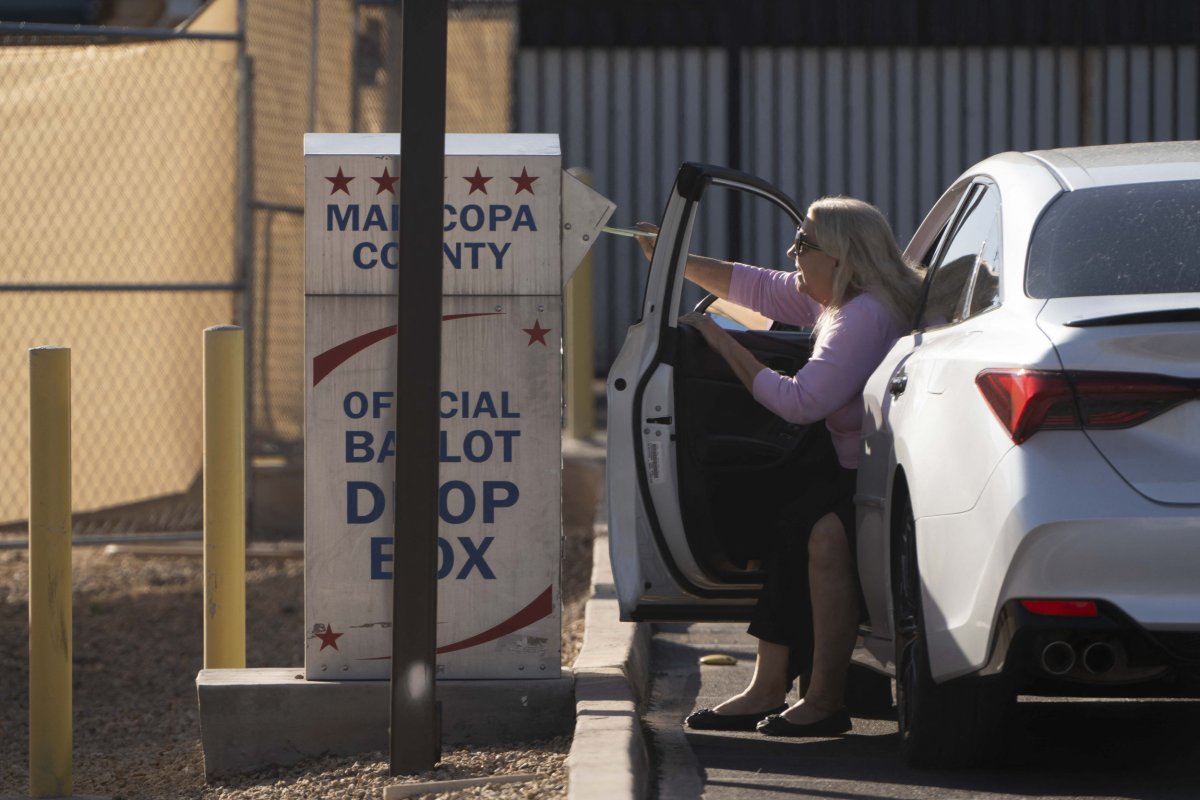A pivotal county in the swing state of Pennsylvania expects to have all its mail-in ballots counted soon after polls close on Election Day.
Some 2,000 miles away, in another swing county in the swing state of Arizona, officials are warning the wait could last up to two weeks.
That chasm reflects the growing concerns that the U.S. voting system, which is carried out by various state and local offices with their own patchworks of procedures and rules, is ill equipped to deal with the new era of mail-in and early voting rules that gained popularity last cycle, when a raging pandemic led to major changes in how the country picks its president.
In western Pennsylvania, officials from Allegheny County said Tuesday that they were on track to deliver their election results for Pittsburgh and the surrounding area a few hours after 8 p.m. on Nov. 5, when polls close, because of an all-hands-on-deck approach they have been testing. Allegheny is home to about 1.25 million residents.
"People want results quickly. That's the expectation, that's the bar," Abby Gardner, director of communications for Allegheny County, told Newsweek Wednesday. "No one has said to us 'I'm worried that you are going to have your results too fast, it should take you longer'."
The picture looks different in Maricopa County, Arizona, where officials have said it could take up to 10 to 13 days to process all its ballots. Maricopa, which includes Phoenix, went for President Joe Biden in 2020 by a margin of about 45,000 voters (in a county of four million people).
The dragging out of Arizona's count made room for a pressure campaign from Trump allies casting doubt on the results, adding fuel to his false claims that the election had been stolen from him.
Maricopa's slower pace comes despite Arizona being one of 12 states that allow processing and counting of mail-in ballots ahead of Election Day, while Pennsylvania is one of 23 states which prohibit that count from taking place until the day itself.

Allegheny officials tout their speed
"It's a mix of human labor and high-speed machine equipment," Gardner said of the county's counting system. "Probably one of the more unique things we do [is] we have just over 200 people who come to the warehouse and open envelopes.
"So, if you are the chief public defender, the health director, the Allegheny County economic development director, everybody is working elections, everybody who can leave their desk for a day gets an assignment."
Allegheny decidedly voted for President Biden in 2020, giving him 59.43 percent of the vote compared to 39.03 percent for Trump. Like the Philadelphia metro area, Allegheny tends to lean in favor of Democratic Party candidates, while more rural areas of the Keystone State lean Republican. The last time the county went for a GOP candidate was in 1972.
At a Board of Elections meeting Tuesday, county leaders said they would be setting the pace for the other counties across the swing state, whose 19 Electoral College votes could determine the winner.
"We set the bar and standards for the commonwealth of Pennsylvania, and I want us to stay that way," Councilor Sam DeMarco, a Republican, told the meeting.
Around 943,000 voters had registered in Allegheny, with numbers expected to rise slightly due to late-arrivals following the deadline on Monday. Over 228,000 of those voters had asked for a mail-in ballot.
When voters last went to the polls in 2023, mail-in votes were tabulated within 18 seconds after the polls closed and officials have said the speed is in part down to their acquisition of envelope-opening machines that can open 50,000 per hour.
Gardner said very few, if any, concerns had been raised about the security and accuracy of votes because of the speed, as the county had been transparent about "how the sausage is made".
Maricopa treads carefully

In the county that covers the Phoenix metro area and is home to 60 percent of Arizona's population, election officials are taking it slow, despite the speculation that developed around the time it took to count the 2020 results.
President Biden won the county with 50.3% of the vote, compared to Donald Trump's 48.1%, prompting the latter to claim the state's election was rigged against him.
Maricopa has introduced new security and transparency measures over the past four years, including placing cameras in key parts of the election center and tours for members of the public curious about what goes on behind closed doors.
In a signal of how cautious Maricopa officials are this time around, law enforcement is also deploying snipers to protect the county tabulation center, where voters are counted.
Deputy Elections Director Jennifer Liewer said at a press conference Tuesday that counting the 2.1 million ballots, each with 79 contests on them, was likely to take up to nearly two weeks.
"We want to make sure that this is a secure process, but we also want to make sure that it is an accurate process," she said.
Election supervisor Bill Gates said there was so much interest in the election in Maricopa because of the near three-way-split between registered Democratic, Republican and independent voters — suggesting an extremely close race when it came to deciding which presidential candidate wins the state's 11 Electoral College votes.
Over 4,000 temporary election workers will be helping with the process on Election Day, while more high-speed counting machines have been brought in. But it could still take time to declare Maricopa's results.
"This is greatly impacted by people who drop off their early ballots on Election Day, because our races will be close," Liewer said.
The contrasts between the two counties, each with their own rules and traditions, is reflective of the patchwork voting system in the U.S.
Unlike in India, which counted 640 million votes in a single day earlier this year, there is no federal rule int he U.S. that mail-in ballots be counted before day-of votes are processed. Election mechanics also differ between states and even counties, while ballots will look different for different localities across the country, all impacting the speed at which results can be declared.
The Brennan Center for Justice explained in 2022 that however results look in battleground states on election night, they could be different as the days go on and counties declare their tabulations.
Voters should not be suspicious of that, the organization said, it is just how the system works.



















:quality(85):upscale()/2024/04/24/878/n/3019466/36c5693c662965c5d1ce91.72473705_.jpg)
 English (US) ·
English (US) ·